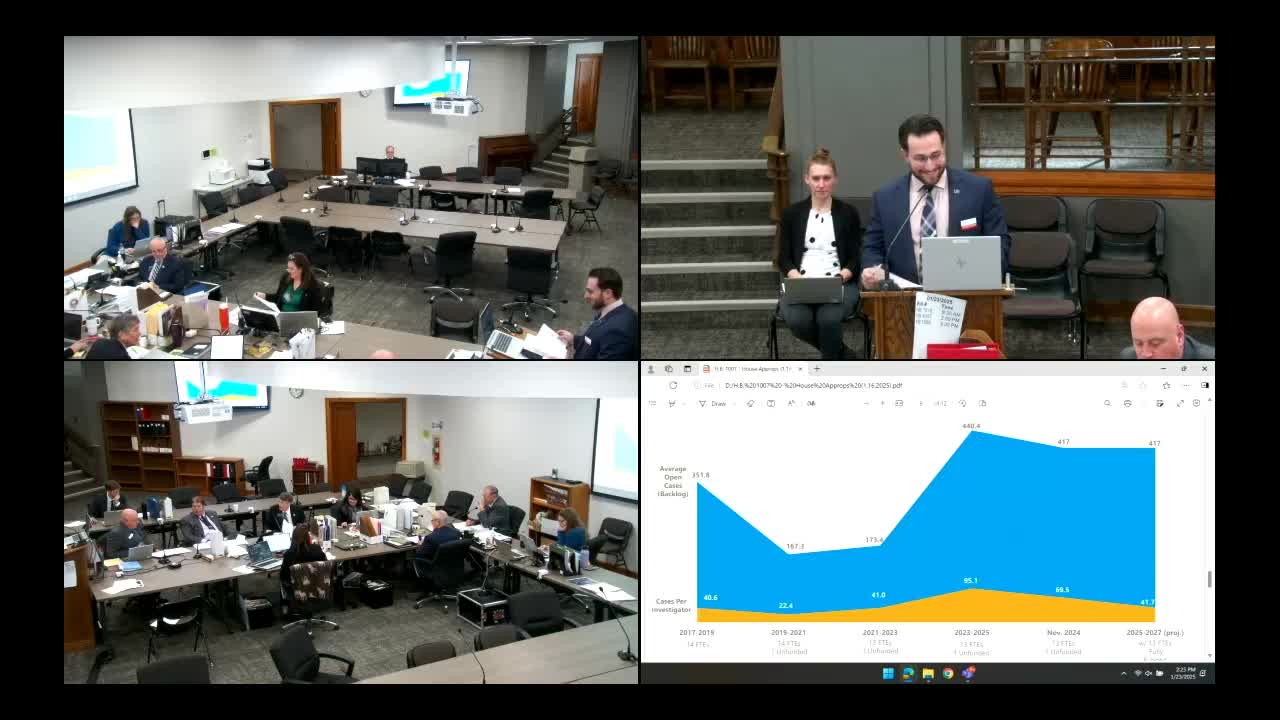Budget Committee Approves $80K Travel Line Item Amid Confusion Over Base Funding
January 23, 2025 | Appropriations - Government Operations Division, House of Representatives, Legislative, North Dakota
This article was created by AI summarizing key points discussed. AI makes mistakes, so for full details and context, please refer to the video of the full meeting. Please report any errors so we can fix them. Report an error »

In a recent meeting of the House Appropriations - Government Operations Division in North Dakota, lawmakers navigated the complexities of budget allocations, focusing on travel expenses and the use of state resources. The discussion revealed a careful balancing act as representatives sought clarity on budget line items that had sparked confusion.
As the meeting unfolded, a key point of contention arose regarding the categorization of travel expenses. One member questioned why certain savings found in the agency's budget were listed separately when they were already accounted for in the legislative base. Grant, a representative from the Office of Management and Budget (OMB), clarified that while these expenses were indeed part of the agency's overall budget, they had not been included in the legislative base, leading to the separate line item.
The committee members expressed a mix of understanding and frustration over the budget's structure. "It's just confusing to me when it's on a separate line item," one representative noted, highlighting the challenges of navigating budgetary language. Despite the confusion, the committee ultimately agreed to keep the items as they were, with the understanding that the amounts involved were relatively minor in the grand scheme of the budget.
The conversation then shifted to potential rate increases from the Information Technology Department (ITD). Representatives were keen to ensure that no additional costs had been overlooked. It was confirmed that any rate adjustments had already been incorporated into the base budget, alleviating concerns about unexpected expenses.
Further discussions included the use of the state motor pool, which is typically utilized for travel. The agency indicated plans to employ this resource for educational outreach programs scheduled for late February, again emphasizing that these costs would remain within the existing travel budget.
As the meeting concluded, the committee members left with a clearer understanding of the budget's intricacies, albeit with a recognition of the ongoing challenges in managing state finances. The discussions underscored the importance of transparency and clarity in budgetary processes, ensuring that lawmakers can effectively oversee the allocation of public funds.
As the meeting unfolded, a key point of contention arose regarding the categorization of travel expenses. One member questioned why certain savings found in the agency's budget were listed separately when they were already accounted for in the legislative base. Grant, a representative from the Office of Management and Budget (OMB), clarified that while these expenses were indeed part of the agency's overall budget, they had not been included in the legislative base, leading to the separate line item.
The committee members expressed a mix of understanding and frustration over the budget's structure. "It's just confusing to me when it's on a separate line item," one representative noted, highlighting the challenges of navigating budgetary language. Despite the confusion, the committee ultimately agreed to keep the items as they were, with the understanding that the amounts involved were relatively minor in the grand scheme of the budget.
The conversation then shifted to potential rate increases from the Information Technology Department (ITD). Representatives were keen to ensure that no additional costs had been overlooked. It was confirmed that any rate adjustments had already been incorporated into the base budget, alleviating concerns about unexpected expenses.
Further discussions included the use of the state motor pool, which is typically utilized for travel. The agency indicated plans to employ this resource for educational outreach programs scheduled for late February, again emphasizing that these costs would remain within the existing travel budget.
As the meeting concluded, the committee members left with a clearer understanding of the budget's intricacies, albeit with a recognition of the ongoing challenges in managing state finances. The discussions underscored the importance of transparency and clarity in budgetary processes, ensuring that lawmakers can effectively oversee the allocation of public funds.
View full meeting
This article is based on a recent meeting—watch the full video and explore the complete transcript for deeper insights into the discussion.
View full meeting
